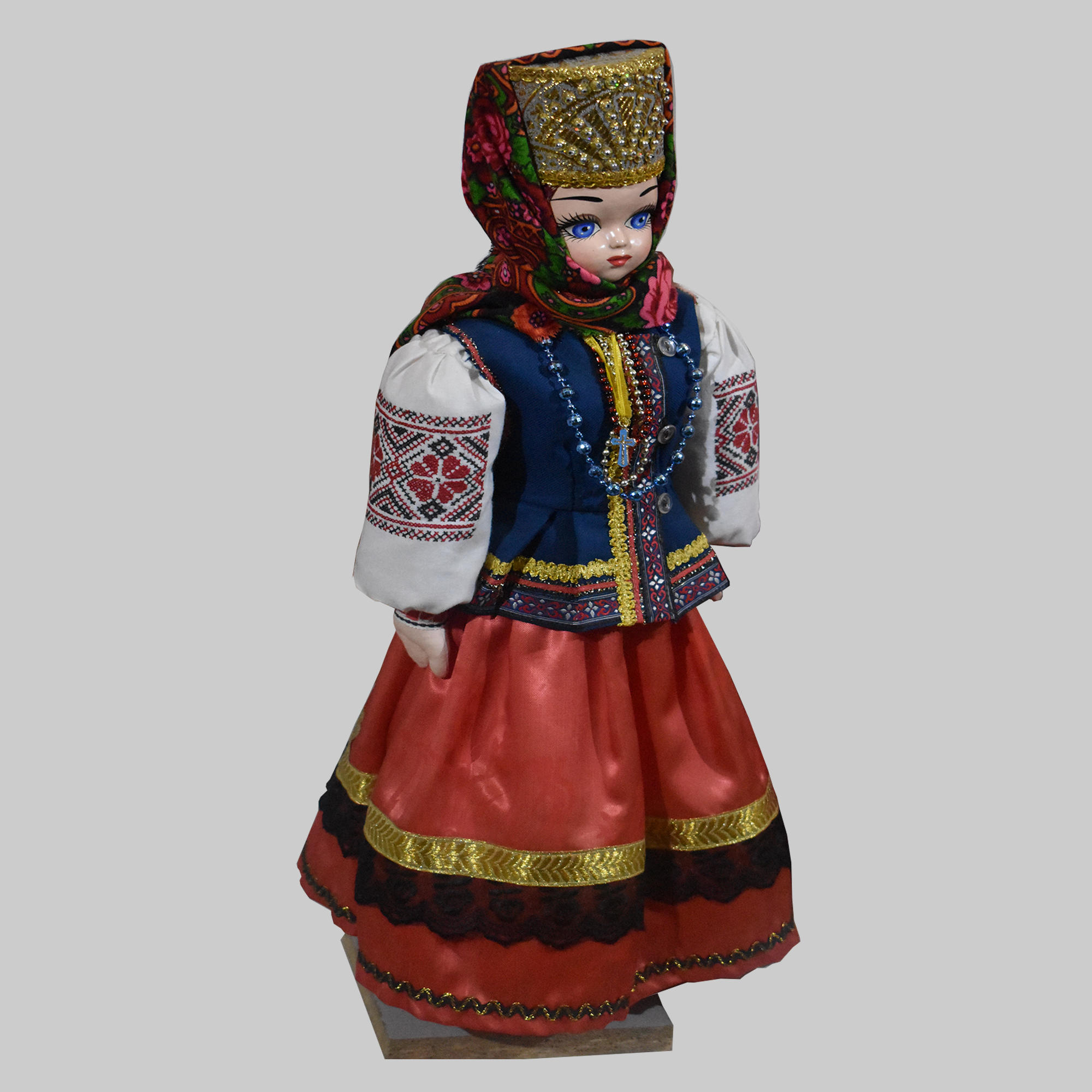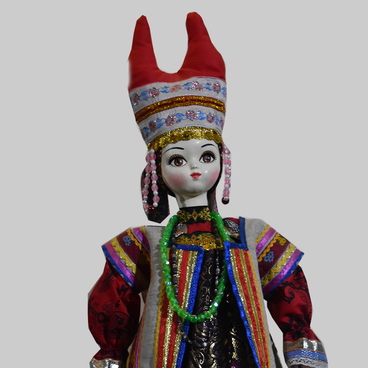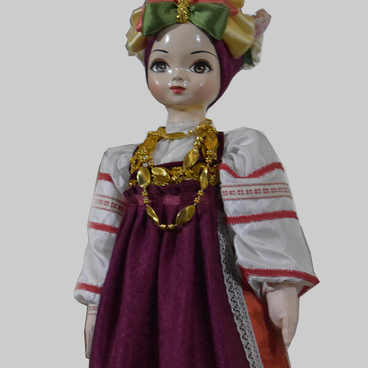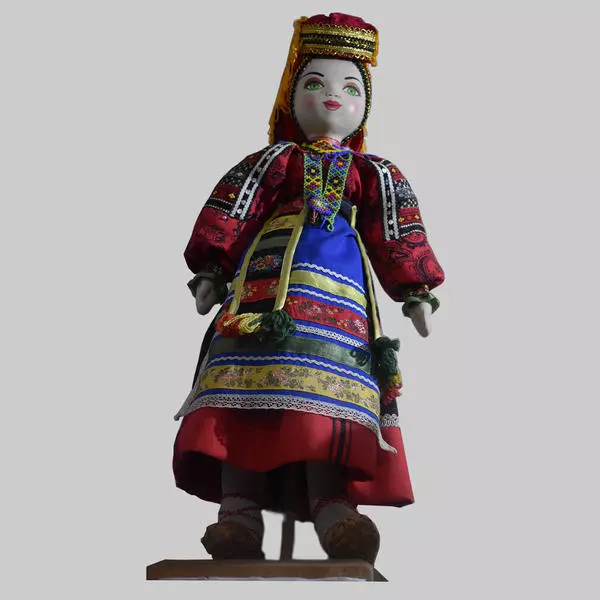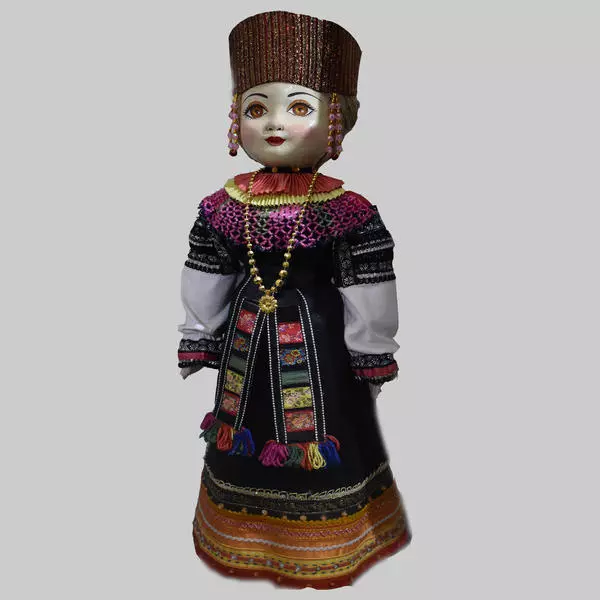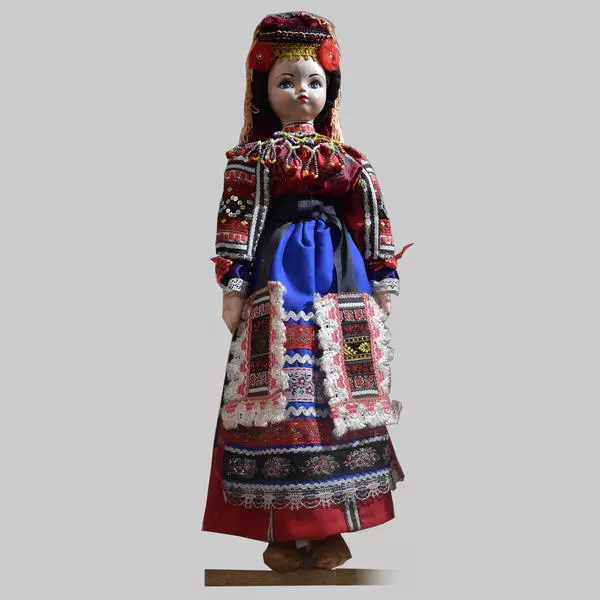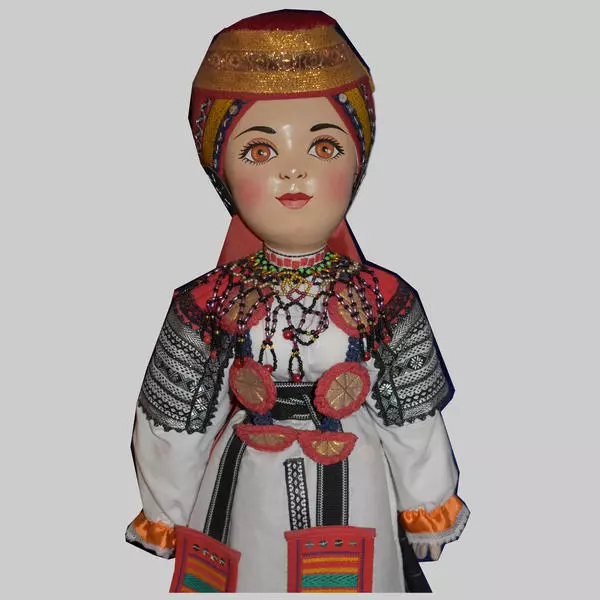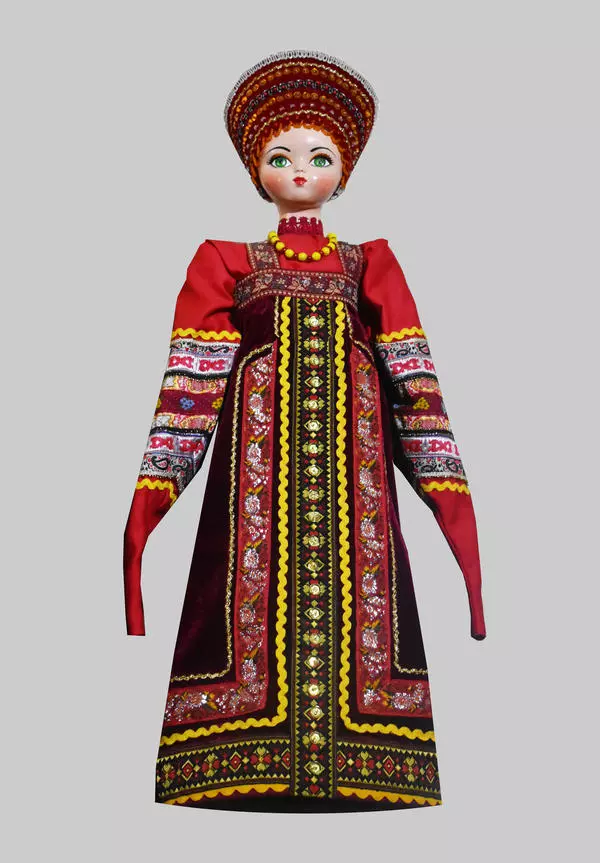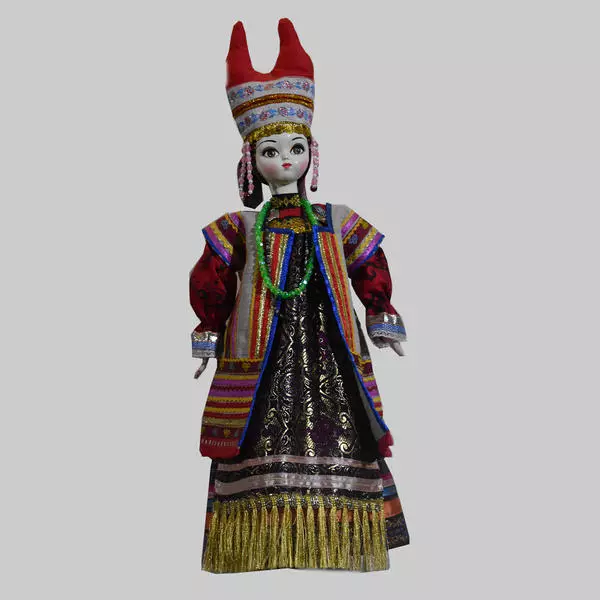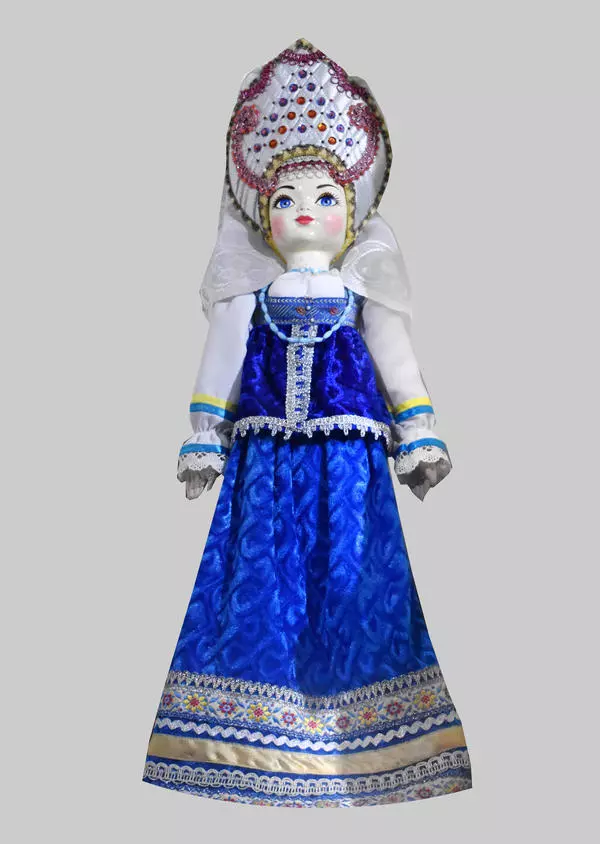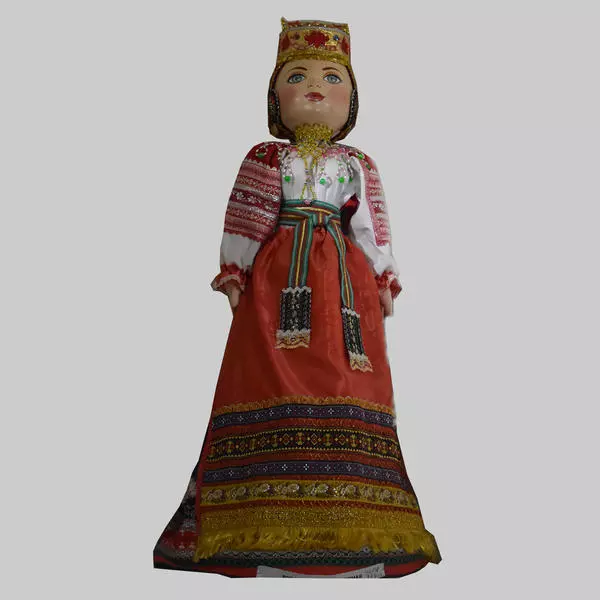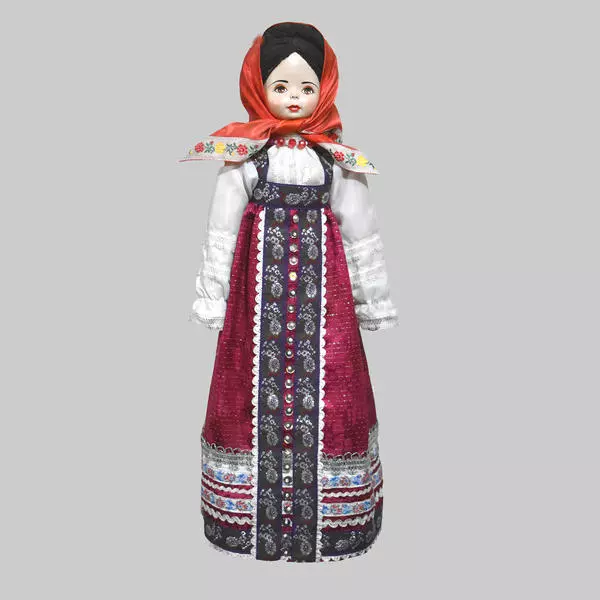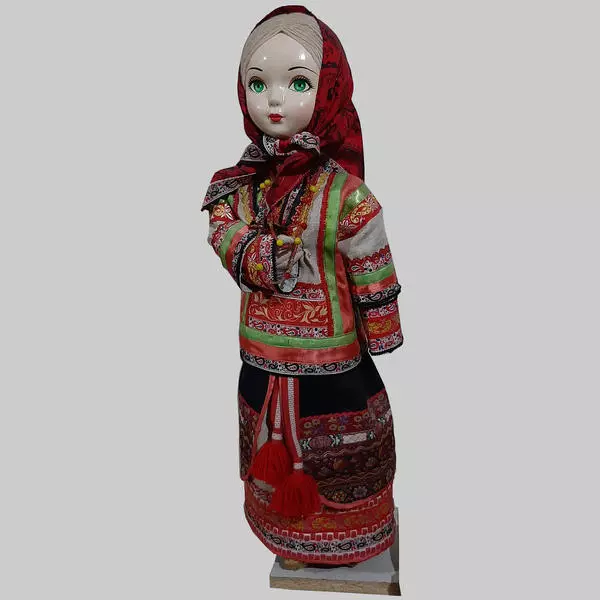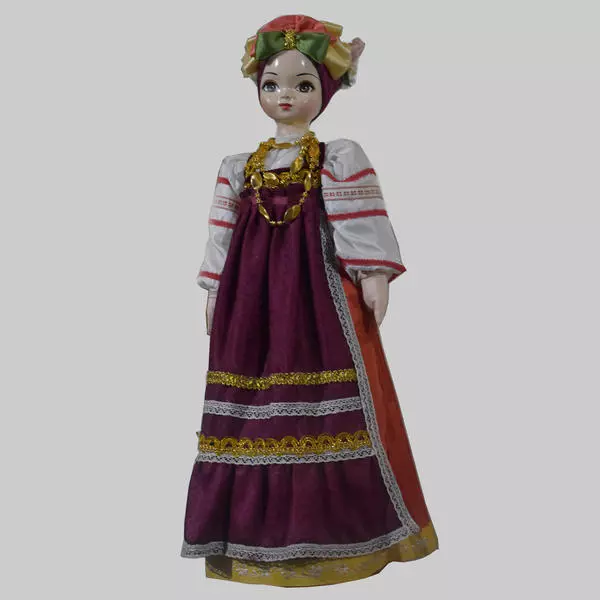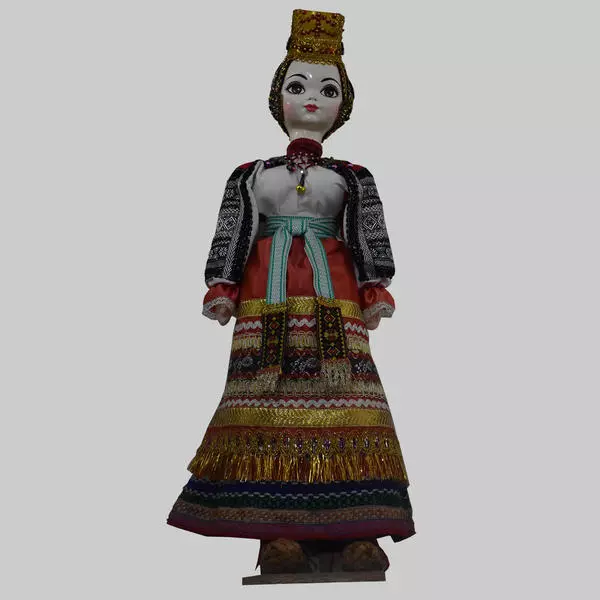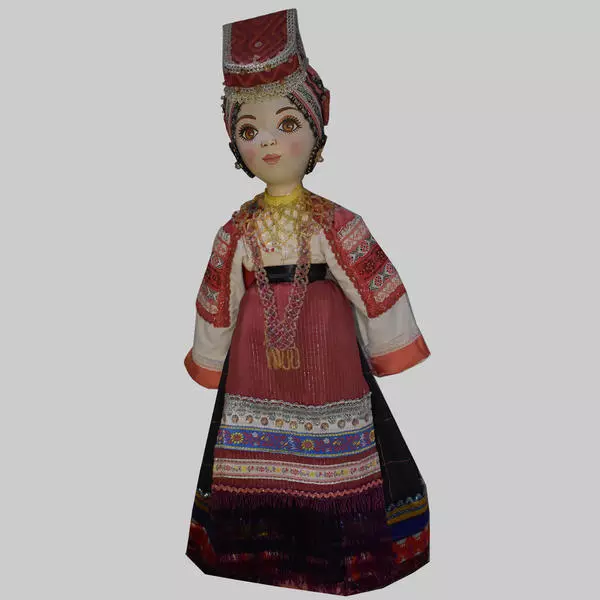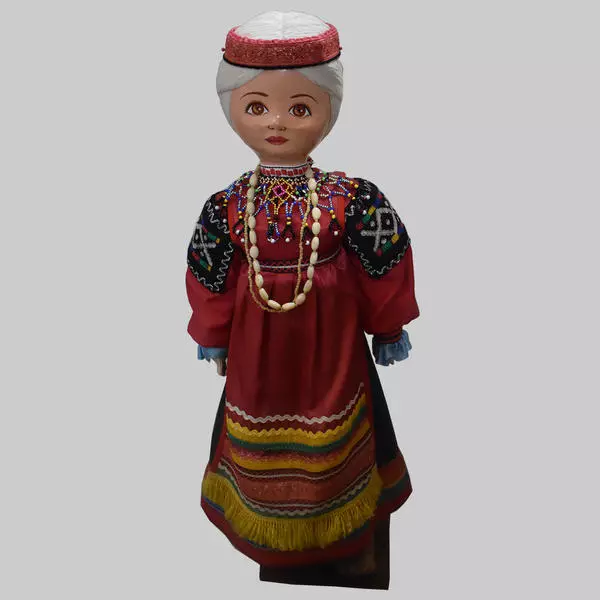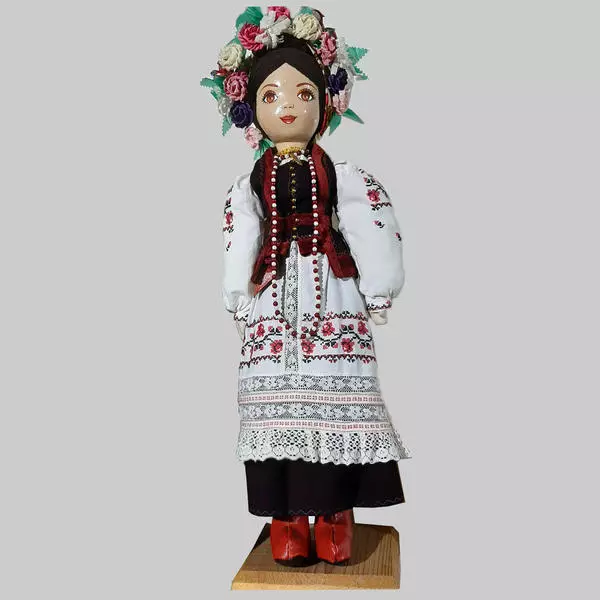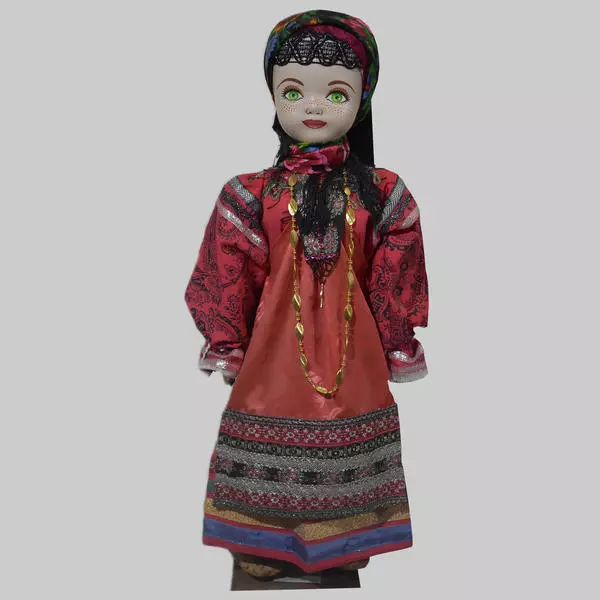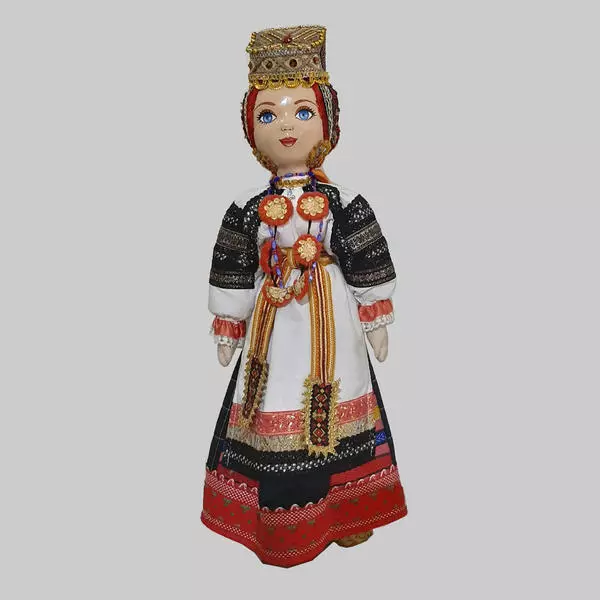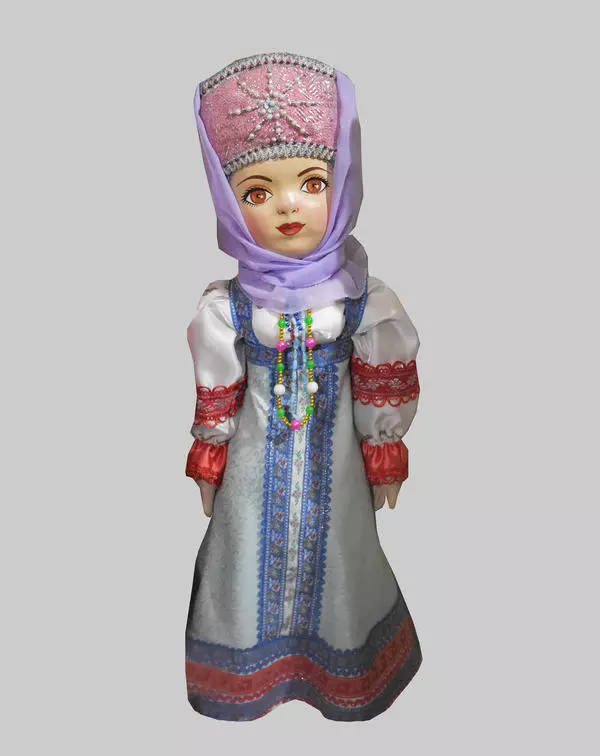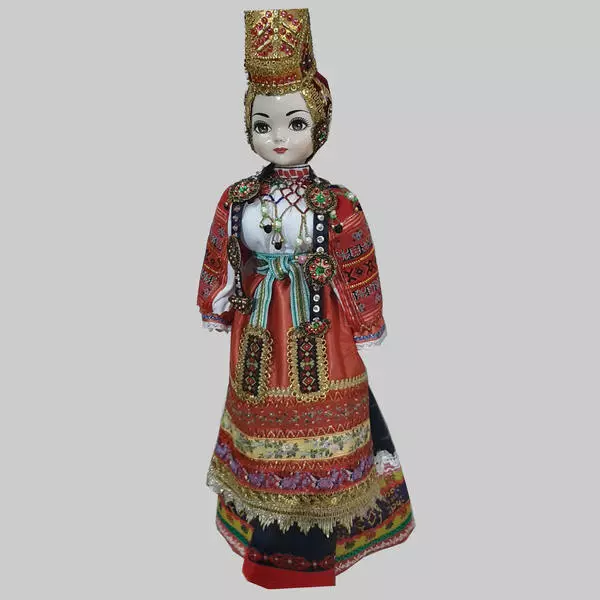A unique folk costume complex emerged in Verkhny (Upper) Mamon district, in the south of the Voronezh Region. It was a fusion of the Ukrainian, Cossack and Russian cultures resulting from intermingling the ethnic groups that lived on that territory.
The village of Mamon was the area’s center, founded as a guard post in the first quarter of the 18th century on the left tributary of the Don - the Mamonka River. One more settlement bearing the same name appeared later. To distinguish them, the villages were called Upper and Lower Mamon.
The traditional costume retained its original features in these lands until the middle of the 20th century. In the early period, women’s outfits included a gown, a poneva (a wrap shirt), an apron, outdoor clothes and a head wear. But eventually, women stopped wearing wrap skirts which were replaced by long skirts made of three pieces of fabric. Sateen, cashmere and heavy silk were used as a material for sewing festive clothes, and block printed cotton was used for everyday wear.
Mamon gowns were sewn with straight ‘polikas’ (shoulder inserts between the collar and the sleeves). The wide sleeves were richly decorated with embroidery. A favorite motif was the geometric ornament with a rhombus in the base. In ancient times, its image symbolized fecundity of the earth, women and plants. When put on its corner, the rhombus was called a ‘circle’ and straight lines ending in hooks and curls often diverged from its corners. People called it ‘burdock’.
Vegetable patterns in the embroidery of the Voronezh Region were more typical for the costumes of the Ukrainian population. They became widespread among the Russians in the second half of the 19th century under the influence of its Ukrainian neighbors, as well as because relatively cheap printed albums and sheets of embroidery patterns became available.
A lined elongated vest with folds on the back complemented the women’s outfit. It was made from black or blue sateen and decorated with ribbons and braid.
A married woman’s festive costume included a kokoshnik (a headwear). The village of Upper Mamon was famous for craftswomen who made them. In the Mamon district, kokoshniks were made in the shape of a high hat finished with gold braiding. A shawl or a kerchief was put on top of the headdress.
Kokoshniks were expensive, so not every family could afford one. They were carefully stored and handed over by inheritance. Kokoshniks were borrowed for especially solemn occasions (a wedding, for example). On Sundays and less festive days, women wore a shlyk – a soft velvet cap, embroidered with gold or silver threads.
The village of Mamon was the area’s center, founded as a guard post in the first quarter of the 18th century on the left tributary of the Don - the Mamonka River. One more settlement bearing the same name appeared later. To distinguish them, the villages were called Upper and Lower Mamon.
The traditional costume retained its original features in these lands until the middle of the 20th century. In the early period, women’s outfits included a gown, a poneva (a wrap shirt), an apron, outdoor clothes and a head wear. But eventually, women stopped wearing wrap skirts which were replaced by long skirts made of three pieces of fabric. Sateen, cashmere and heavy silk were used as a material for sewing festive clothes, and block printed cotton was used for everyday wear.
Mamon gowns were sewn with straight ‘polikas’ (shoulder inserts between the collar and the sleeves). The wide sleeves were richly decorated with embroidery. A favorite motif was the geometric ornament with a rhombus in the base. In ancient times, its image symbolized fecundity of the earth, women and plants. When put on its corner, the rhombus was called a ‘circle’ and straight lines ending in hooks and curls often diverged from its corners. People called it ‘burdock’.
Vegetable patterns in the embroidery of the Voronezh Region were more typical for the costumes of the Ukrainian population. They became widespread among the Russians in the second half of the 19th century under the influence of its Ukrainian neighbors, as well as because relatively cheap printed albums and sheets of embroidery patterns became available.
A lined elongated vest with folds on the back complemented the women’s outfit. It was made from black or blue sateen and decorated with ribbons and braid.
A married woman’s festive costume included a kokoshnik (a headwear). The village of Upper Mamon was famous for craftswomen who made them. In the Mamon district, kokoshniks were made in the shape of a high hat finished with gold braiding. A shawl or a kerchief was put on top of the headdress.
Kokoshniks were expensive, so not every family could afford one. They were carefully stored and handed over by inheritance. Kokoshniks were borrowed for especially solemn occasions (a wedding, for example). On Sundays and less festive days, women wore a shlyk – a soft velvet cap, embroidered with gold or silver threads.
